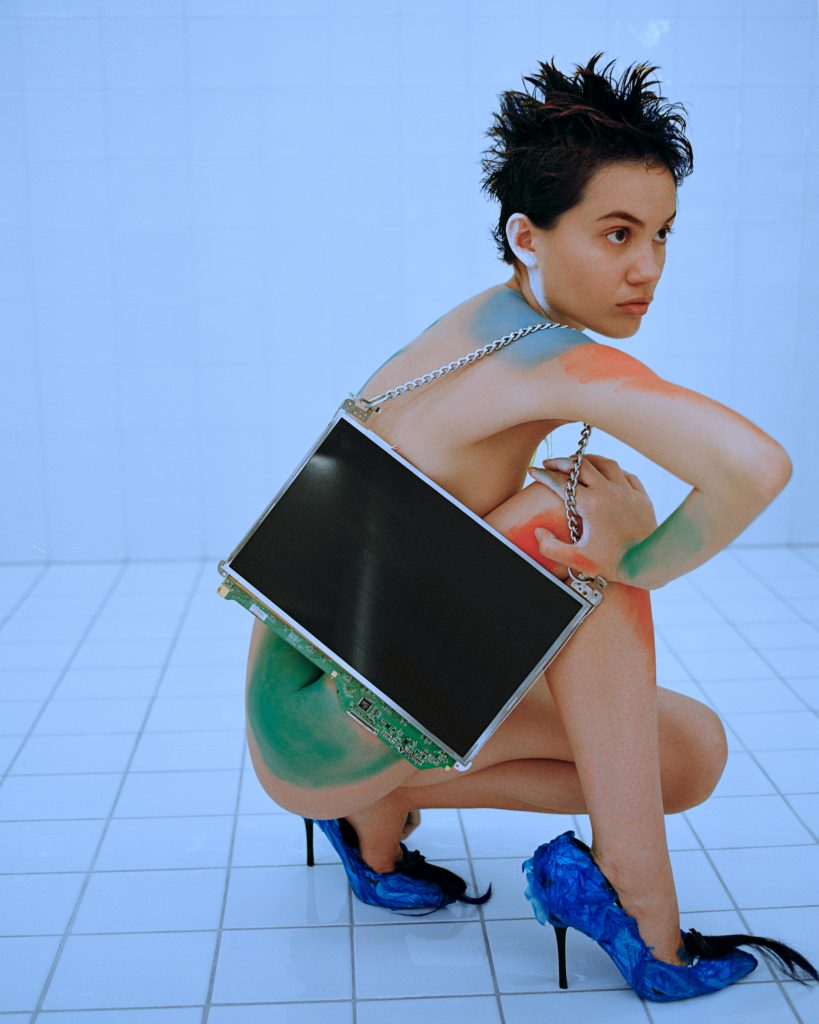
10 minutes: That’s how long it took for Bella Hadid to go from nude underwear to fully dressed. She strutted down the runway in a dress made on the spot with synthetic fibers sprayed onto her body and swiftly tailored by Coperni’s head of design, Charlotte Raymond, to include a draped neckline and thigh-high slit. It was sleek, chic, and a little sexy. It also defied any notion of traditional dress-making — a bold reimagination of what it means to make a garment. While Coperni’s founders Meyer and Vaillant insist the showcase is not an homage, it finds its clear visual predecessor in Alexander McQueen’s Spring/Summer 1999. In a flashy display, supermodel Shalom Harlow stood in a white dress on a rotating platform as two robotic arms sprayed her with yellow and black paint. With the buzz that Coperni’s recent showcase generated, it is expected that other fashion houses will soon follow suit with bigger and bolder incorporations of technology into their collections. Brands like GCDS have even held entire fashion shows in virtual reality. Tech, as it seems, is not only a tool but also an inspiration for creators. Defined by heritage and tradition, fashion’s embrace of technology provides a microcosmic model for society at large, showing how newfangled tech could in fact provide opportunities for artistic creativity that could never exist in the past. The future of fashion remains excitingly unpredictable, in most part thanks to the exponential development of technology in tandem. The issue that remains in question is not whether technology will be featured, but just in what ways.
Photo by Cassandra Harris.

